4 Ways to Get Killer Attention From your Dog
Do you wish your dog paid more attention and offered good behaviors? Then, check out our “Engagement Suite,” where I’ll show you 4 ways to get killer attention from your dog!
This video was originally recorded during our weekly Cyber Office Hours on Facebook on Friday, 09/25/2020. This show was jam-packed with good info; we just had to share it with a broader audience!
OUTLINE OF THE TECHNIQUES
In this video, we talk mainly about four of Simpawtico’s big strategies when we work with dogs (especially dogs new to the training). They are:
- The Free-Engagement Drill
- Variant Energy (which is one of our Master Keys)
- Auto-Sits
- The Find-My-Face game
Each of these, taken in succession, will teach your dog how to work with you. In addition, it helps foster an active learner that participates in their training and is motivated to work with you. As a result, you can get sustained attention and establish effective communication, making your training move faster!
TIME STAMPS
We recommend watching the whole video on your first pass. If you’re coming back to review, you can jump right to the part you want:
- Engagement Drill 1:20
- Variant Energy 11:46
- Auto-Sits 16:10
- Find-My-Face 23:45
- Q&A: How long should training sessions be? 29:36
- Q&A: How many training sessions should I aim for every day? 30:47
- Q&A: Don’t they get confused with so many “on-switches?” 31:12
- Q&A: Have you worked with any dogs that do not seem interested in engagement, even at an easy level? 32:52
- Q&A: What’s the best way to increase attention on me? 35:54
FREE-ENGAGEMENT
Engagement is the first foundational piece that everybody should do when working with their dogs. This drill is something that you would do with a new dog. If you have a puppy, this is some of the first training. For a new dog you adopted a new dog from the shelter. This exercise is the very first thing you would do. And whenever I start working with a new dog that comes into my studio here, the first thing I do is engagement stuff.
- I want to teach the dog how to work with me.
- I want to teach the dog my communication system.
- I want to build foundational skills to move my other training faster.
Even in the in-person Basic class and the online virtual basic classes, it’s the very first thing I have students do. I send a video out to everybody that they have to practice before class even starts.
So let me get this and give you a quick rundown of how the engagement works.
Pick a Conducive Space
First, you want a neutral, distraction-free area to work. In the video, I’m working in my training studio; you could be in your living room, a family room, or a garage. You can do the drill there if you have a relatively secluded yard without too many squirrels or neighbor dogs that might take your dog’s attention away.
Communication
Have a consistent communication system. Readers who have followed my work know I use markers, specifically “Yes” and “Good.” Markers are just laser beams to pinpoint precise moments when I get what I want from the dog. Markers are crucial communication pieces.
I have a whole article going into greater detail about using markers.
Food Handling
The other item is food handling.
- Set the food on your hand in the valley between your pointer and middle finger at about the second joint. Set the food there; you don’t need to stick it between your fingers. This isn’t a magic trick with a quarter. Just drop it there in the joint.
- Trap it with your thumb.
- Then cup your hand slightly.
This configuration makes it so your dog can only get the food once you move your thumb. It also allows you to manipulate the food and hold it upside down. You can also do underhand or overhand presentations. So you can easily manage and handle the food in many ways—that’s important.
The other thing this does is create a big target for the dog as they access the food. Many trainers will teach targeting as a separate skill, which wastes time. Don’t make it a standalone thing; integrate it into what you’re doing.
So, I present food that way every time, and the dog comes to get the food. So, I’m teaching the dog how to Target my hand without making it a separate thing. Instead, I’m integrating it into my work, streamlining the process.
FREE-ENGAGEMENT
Let’s assemble the markers, food handling, and targeting—here’s how the Free-Engagement drill works.
Encourage the dog to actively participate in their learning by moving around the space without making requests or coaxing them. Consistently nagging the dog to do things is ineffective and can become cumbersome. Instead, let the dog take the reins in their learning journey.
I’m going to move about the space. Many dogs will see their owner moving around, get curious, and take a step toward them. On that first step—when you start to see them commit to it—you mark “Yes!” and present the food target. Then the dog comes to get the food.
Movement is Motivating
I’m huge about having a dog move into their food rewards. A lot of training systems push food at the dog. I don’t do that; the dog always does some movement to access their food. Even if I have a dog lie down, they don’t have to get up to get it, but they’ll have to stretch out their neck to get it. So the dog is always accessing the food on their own instead of me shoving it at them. That works with a dog’s instinctual programming.
I’m going to move about the space here, and I’m going to do a few of these, and I want you to see how Wednesday works and what we’re looking for. Now, she’s fluent with this, but with a new dog, we want to see their speed, accuracy in targeting, and prolonged engagement increase over time. I don’t want a dog to tune out; I want them to stay focused and say, “Hey, what are we doing? This is great!”
You can see in the video when I do this with her, she’s already enthusiastic about it. And you see how as soon as she accesses a reward, she immediately turns around and is ready for the next run. So that’s what I’m looking for—some prolonged engagement with the dog. They say, “Hey man, let’s keep working together; I like this!”
For a new dog, building that speedy enthusiasm could take a couple of days. If I work with my Jack Russell, Darwin, he’s three times as fast. He hits my hand like a torpedo. I don’t even have time to grab the next piece of food before he’s coming at me like, “What’s next?!” That’s the pushy enthusiasm I want when working with a dog. That’s super, super powerful stuff.
So that’s the Free-Engagement piece right there. That’s a whole exercise in itself.
I’m teaching the dog all the essential pieces we used to train. So if I’m doing sit, down, stay, come, take it, drop it, leave it, loose leash walking, heel, finish, spin, shake, high five—all these things use these tools I’m teaching here. So the communication, the food handling, the targeting— all of that is introduced here. This work right here is in the classroom already. The better a dog is at this, the faster all my other training goes.
If you need help with your dog paying attention or being invested in training, grab a few treats and do this. Then, work it into your training.
You can even use this as a warm-up to a training session. For example, if I bring one of my dogs downstairs and want to work on some complicated maneuver, I do this for 30 to 60 seconds to get them into the game. I want them to think, “OK, we’re training right now!”
VARIANT ENERGY
The second thing I want to teach you about today is the concept of variant energy.
You can communicate much to a dog about what you want or don’t like with the energy you present with your body. Dogs are all about reading body language and decoding movement. That’s one of the main ways dogs communicate with each other.
Well, the primary way humans communicate is with our mouths via words and sentences. The human brain comes with pre-installed software designed for language.
That’s not the case with a dog. Teaching a dog commands is teaching them to memorize sounds. That’s an integral part of training but don’t get too hung up on it. Instead, in the early stages, use your energy and body language to communicate with your dog.
Variant Energy works like this:
- If I am getting what I want from a dog, we are moving. There’s some energy, we’re upbeat, we’re peppy, and we’re having fun. We’re invested in the process.
- If I am not getting what I want, I deactivate. I’ll just shut down, go flat and neutral like I’m a wall of ice.
The Key Phrase in This is, “Deactivate while you wait.”
I’m waiting for them to work through this, and remember I was talking about getting the dog to participate in their learning. I want to engage them as active learners and start working through training problems on their own.
So, the energy stops. I quiet my body and voice and hang out and wait. If I’ve set things up and built enough reps, the dog might look at me like, “Dude, what happened? Why did you shut off? OK, what should I do?”
Then we get the dog to start figuring out how to hit the on-switch, and on-switch training is tremendous. “On-switch training” is a big piece of what I do. It’s about teaching a dog to hit the on-switch so that they learn how to reactivate me with their behavior. So we show these dogs that behavior has a function, that their behavior makes things happen in their life.
When the dog gives me what I want, I pop! I reactivate, use my marker word, “YES!” and move into a reward-event. I like the dog to understand that they did that; they made me come back to life. That’s a cool thing to use in your arsenal.
It’s Multi-Use
You can even use this in your treatment of annoying behaviors. For example, if you have a dog that jumps a lot, there are several things you can do that I won’t go into right now. But the key strategy is to use your Variant Energy. If the dog jumps because they want attention, shut down and deactivate. Don’t get reactive and confrontational because you’re just putting gasoline on the fire that way; use that variant energy and just shut down. Then when you turn your body to shed the dog or step back, it’s entirely without any affect. It’s emotionless. It’s robotic. You’re just at the wall of ice.
Then the feet hit the ground, and you get that slight pause, respond, “Yes, thank you.” You want that active learner to see that jumping doesn’t get them what they want. Sitting and looking cute does. So you can communicate a lot with that Variant Energy.
AUTO-SITS
Let’s take that concept of variant energy and let’s use that in the following piece, which is Auto-Sits.
Once I have a dog that’s good with their engagement—they’re following me, we have some prolonged attention, and they’re pushy, you can move into this next piece. As a prerequisite, I’ve also taught sit as a separate thing. Your dog is already a week or two into training, and their sits are pretty good. So, now we’re going to start introducing Auto-Sits.
- Do your Free Engagement—they’re moving, targeting, and taking food.
- Then, at some point, shut down and deactivate (using the first part of Variant Energy). I want the dog questioning it, like, “Dude, what the hell? Why’d you stop? How do I get this person to come back on?” Of course, the answer is to put their butt on the ground.
- The instant that butt hits the ground reactivate with a pop. Mark it “YES!” and move into a Reward-Event.
So, you see, you don’t ask for the sit; let them actively participate in their learning. I want them to understand that a sit reactivates people. Sit is an “on-switch.”
So then the exercise goes: move, move, move, stop, and freeze. And then the dog sits, and that’s how they turn you back on. So this helps further illustrate to your dog that they have some control over the environment with their choices.
Don’t Lure or Bribe
One thing to notice is that I don’t have the food out. It’s imperative that in training in general—even though we use food—we have to establish the idea that food is not promised to guaranteed. Remember: behavior has a function. Dogs can make good things happen; they make the rewards appear with their behavior. So I deactivate and hang out, and when they put their bottom on the ground, I say “Yes!” and pop into life. And then I pull the food out, and I target it.
Part of your practice is getting good with your food handling so you can reach in and get it, and it’s already in the proper position.
I hope you see how this teaches a dog some incredible skills.
If you get good at the Auto-Sit, you’re teaching a dog that there’s never a wrong time to sit. I want a dog like, “Well, sits are how I fill air pockets in my brain.”
This concept is so hardwired into a couple of my dogs that if I’m in the middle of the living room and I approach them to pet them and tell them I love them, they automatically square up and sit. That’s a rad habit to have; it’s freaking amazing.
- If you see me coming with the leash, sit
- If you want to go out this door, sit
- I’m preparing some food for you, sit
- We’re going to meet somebody, sit
- We’re waiting to cross the street, sit
- You don’t know what you’re supposed to do? Sit. It’s always the right answer.
It’s a fantastic thing, and this is where it starts with the Auto-Sit drill.
Accommodations and Troubleshooting
Dogs that are new to this kind of thing struggle a little bit. Perhaps they still need to get used to working through problems. Or they may have low frustration tolerance. In cases like these, you can give them help. This is why your dog must know to sit in a completely separate context with a request.
I’ve worked with dogs that have come in, we’ve done some engagement, and then I “deactivate while I wait” to capture an Auto-Sit, and the dog will come up, and you can see they’re just “blue screen,” like “What happened?” So, I’ll pose it to them almost like a question: “…sit?” they’ll tentatively sit, and then I pop with a “YES!” and an energetic reward event. Then, when they see the shift from neutral to “boom,” you can see in their faces, “Oh my God, that’s awesome!”
I call this “Helping them with their homework.” Sometimes you give them a couple of freebies so they can see the pattern. Build a bit of behavioral momentum, and then have them try it on their own. It never takes more than four or five like this before they start sitting independently without help.
Ambush Training
Auto sites are a wonderful exercise you can do with your dog during your engagement training. Along with it, I like to do some “ambush training.”
For example, if I’m walking through the house and my dog is curious about my actions, I’ll stop and wait for them to come up, square up, and sit down. Then I pop: “YES! OMG, you’re such a good dog!” There’s so much pure joy in them. It’s wonderful. And I’m keeping that Auto-Sit habit sharp!
FIND MY FACE
A fun add-on game that you can do is “Find My Face.” It incorporates all of these other pieces in the basic engagement training and is an extension of the Auto-Sit. The criteria here is not necessarily the sit (although most dogs add that, too); it’s that they move, find my face and look at me.
You could ask for this. There are a lot of trainers that train “Watch Me” and “Look,” but I find that if we can get the dog to do this voluntarily—if they become an active learner and figure out that this is an on-switch—that it’s deeper learning. It’s much more long-lasting, and it’s much more motivating for them to do it that way.
So here’s how Find My Face works:
- We’ll start with the Free-Engagement drill and Auto-Sits.
- When I deactivate, I’ll be facing away. I’m going to make it easy in the early stages—I’m not going to go 180º; I might only go 90° so the dog is looking at the side of me.
- I want that dog to do is move into my field of vision and look at my face. That triggers the marker and the reward event.
As we work through this, I want that dog to find my face when I turn away consistently. So I’ll get to where instead of 90º I’ll turn 180º, and I like the dog to zip around, find my face, and look at me, which turns me back on. This exercise is amazing.
LET’S RECAP
- Start with Free-Engagement. That’s where you reinforce your dog’s commitment to stay engaged with you and active in the learning process. You’re just moving, talking, and targeting. This drill teaches you food handling, movement, timing, and communication. It’s also teaching your dog the marker word and the targeting.
- Then you use your Variant Energy to start teaching them what you want and don’t want, whether in a training situation or working on an annoying behavior.
- Right away, start teaching Auto-Sits. Start using Variant Energy in the Free-Engagement game to teach your dog that sits are a reliable on-button; sitting is just one of the most remarkable things you can do in your life to make great things happen.
- Then you can introduce the Find My Face game to strengthen your engagement and bonding further.
These training items will help you create a dog that’s not only interested and invested in their learning but also interested in investing in YOU because working with you makes awesome things in their life happen.
Q&A
Question: How long should training sessions be?
More short sessions are much better than fewer longer ones. Even if they have the physical stamina for extended sessions, the mental stimulation really tires them out. You use a lot of mental bandwidth when you do these high-density exercises. So, depending on the breed, 5 minutes is a good starting place. Some dogs may want to go longer, but even then, break it into 5-minute blocks. Give him a break. Short sessions are better than longer ones.
Question: How many training sessions should you aim for each day?
How many training sessions should you aim for? I understand we’re all busy, but even one session is better than none if you can manage. That said, 2 or 3 five-minute sessions daily would be dynamite if you can do it.
Question: Do they get confused with so many “on-switches”
Not really. It’s good to have a variety of things they know will reliably work in the environment. If they give me one that’s not what I want, we’ll use the “game show host” model and help them find the right one.
IN CLOSING
Well, that’s all I wanted to teach you guys about today. I’ve already thrown a lot at you, so make sure you drop questions about this on YouTube or in the comments below. As always, keep learning and keep practicing. Thanks for looking!


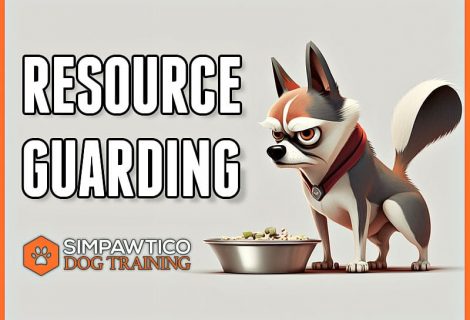
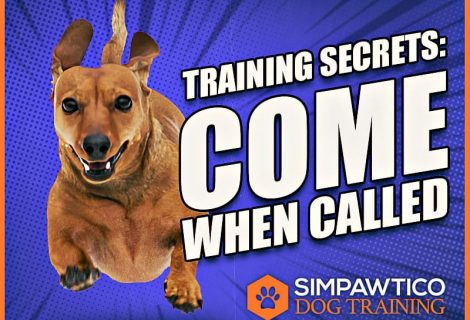
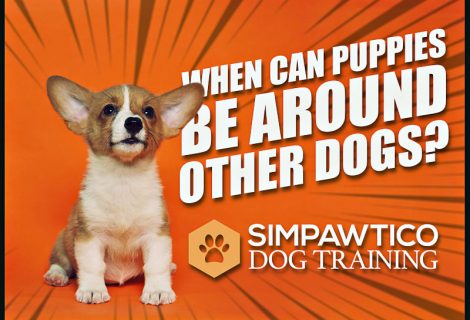

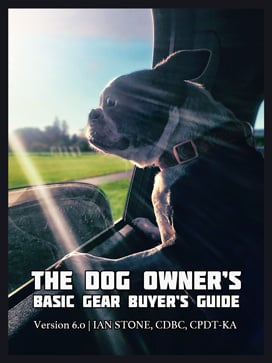


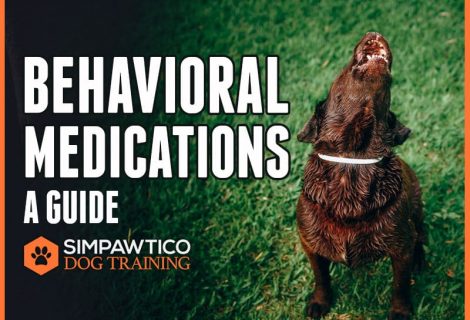
Trackbacks for this post